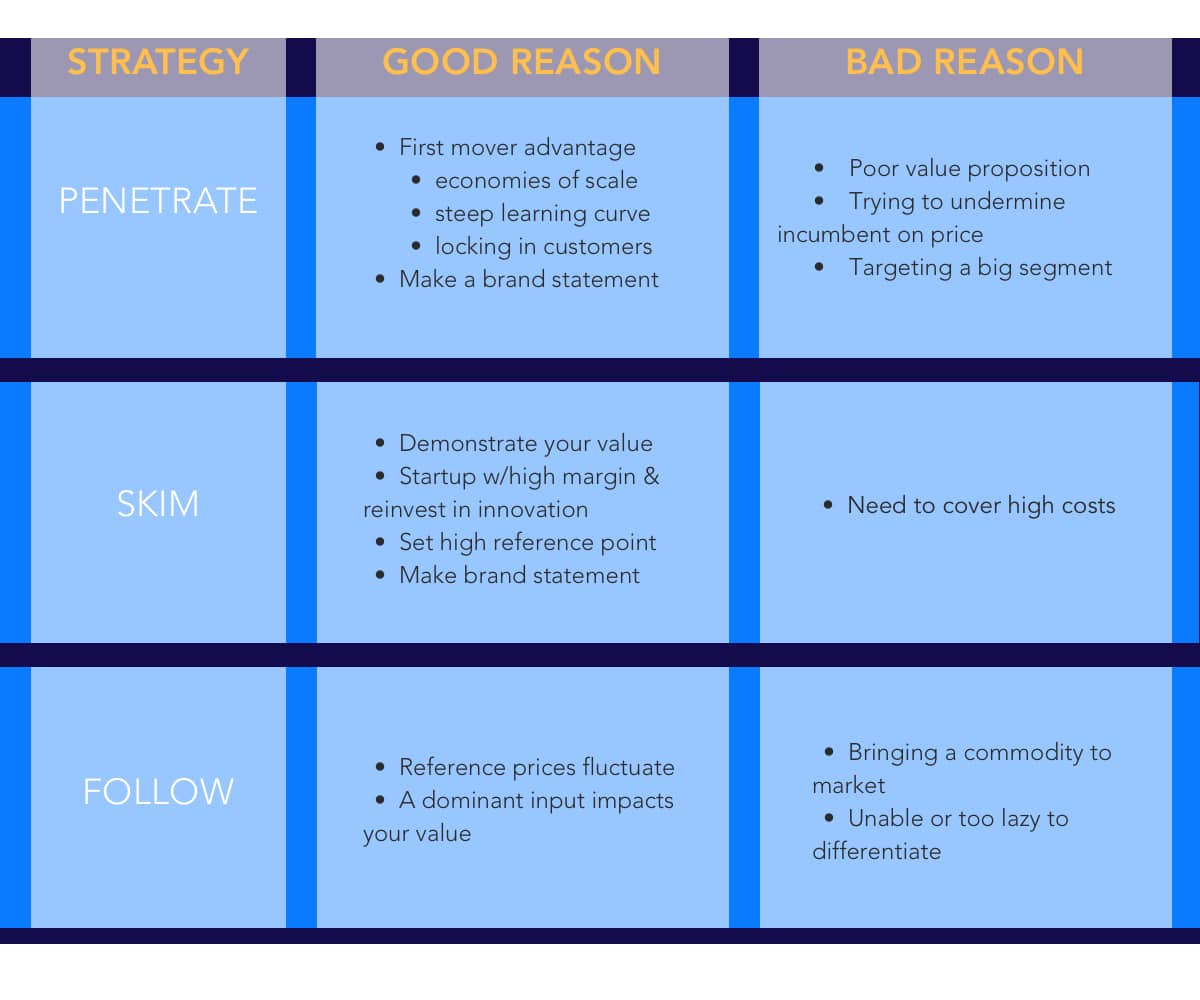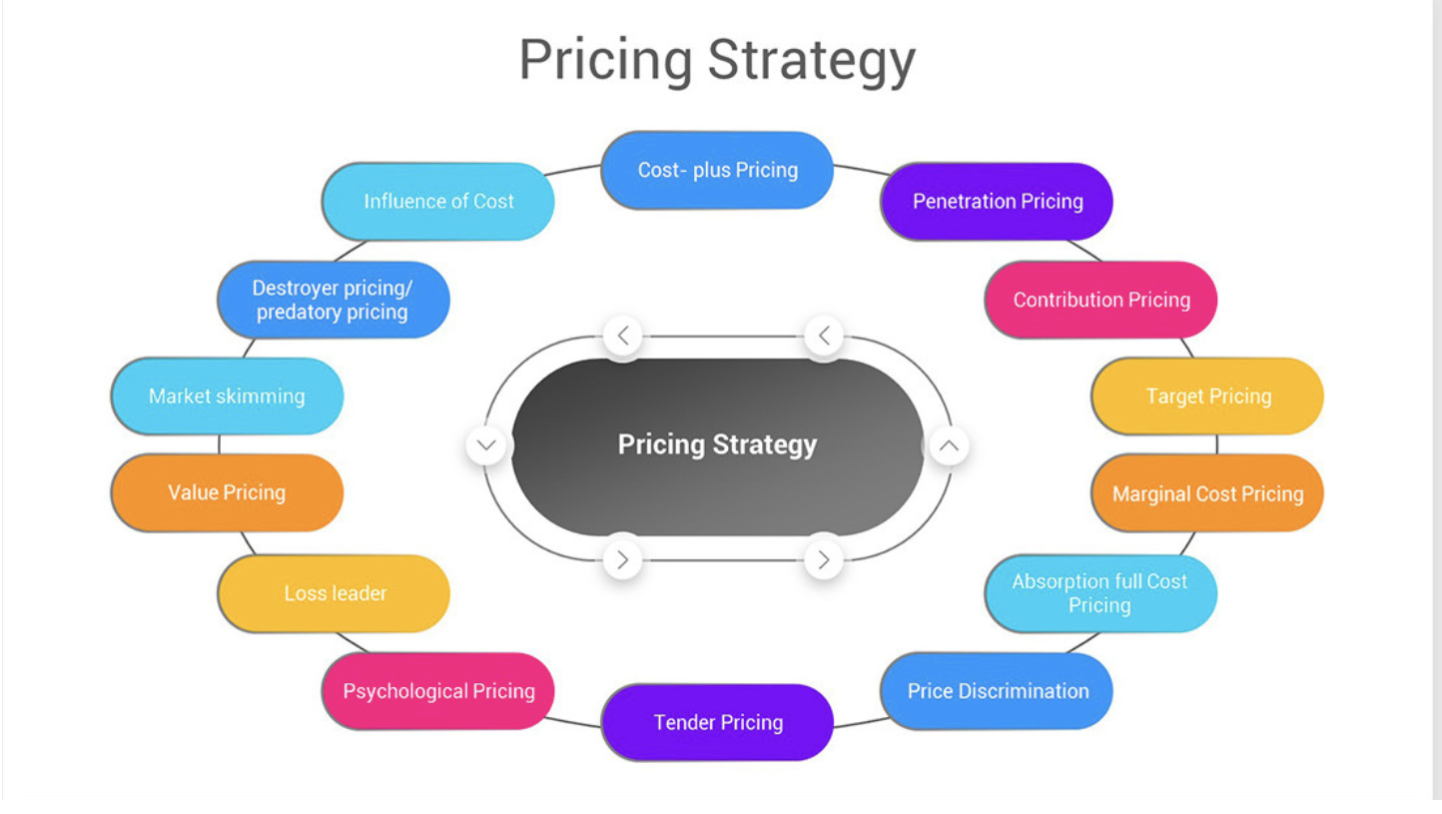Why Flexibility is Critical in Establishing Your Pricing Strategy
Why Flexibility is Critical in Establishing Your Pricing Strategy
Blog Article

Master Effective Pricing Strategies to Make Best Use Of Revenue
In the ever-evolving landscape of business, understanding reliable rates techniques is vital for organizations intending to make the most of profit. A nuanced understanding of pricing psychology can dramatically affect consumer behavior and investing in decisions.
Understanding Prices Psychology
Understanding prices psychology is important for companies intending to optimize their rates approaches. This field examines just how consumers regard costs and just how these understandings affect their acquiring choices. Key principles in pricing psychology consist of the anchoring impact, where the first price offered functions as a referral point for customers, and the concept of cost sensitivity, which differs amongst various client sectors.
Additionally, companies can utilize the idea of perceived value, where the viewed advantages of a product or service can warrant a higher price point. Costs pricing can produce a mood of exclusivity, bring in consumers that link greater costs with premium top quality. On the other hand, mental prices, such as setting a cost at $9.99 instead of $10, can dramatically influence customer behavior by making costs appear much more attractive.
Additionally, deficiency and urgency can boost the perceived worth of items, triggering quicker purchasing choices. Recognizing these mental triggers allows services to develop prices methods that not just drive sales yet additionally foster consumer commitment. Hence, grasping pricing psychology is vital for reliable rates strategy formulation, resulting in enhanced earnings and market positioning.
Implementing Value-Based Rates

Next off, section your customers based on their readiness to pay and the worth they perceive. By doing so, you can customize offerings and rates approaches to align with various sections.
After collecting understandings, set prices that mirror the maximum amount a client agrees to pay, guaranteeing that they perceive a fair exchange for the worth obtained. Interact the worth recommendation successfully, highlighting the benefits and differentiators of your offering. Continually keep track of market problems and customer responses to fine-tune your rates method over time. By implementing value-based pricing, companies can boost productivity while promoting long-term consumer commitment.
Discovering Dynamic Pricing Versions
In today's rapidly transforming market landscape, dynamic rates versions have become an effective strategy for services seeking to maximize profits and react to changes popular. These designs allow companies to readjust their rates in real-time based upon various variables such as customer habits, market fads, and stock degrees. By leveraging information analytics and formulas, organizations can determine ideal rates points that take full advantage of sales while remaining competitive.
Dynamic pricing can take different types, including time-based prices, where costs change based upon time of day or season, and demand-based pricing, which changes rates according to existing customer need. This versatility not only improves earnings yet likewise enhances client fulfillment by providing costs that mirror real-time market problems.
Implementing vibrant prices requires a robust technical infrastructure and a deep understanding of customer sections. Transparent interaction regarding prices changes can assist minimize consumer discontentment and foster count on, ultimately leading to continual earnings in an affordable industry.
Analyzing Competitor Rates
Checking competitor pricing is necessary for organizations aiming to preserve an affordable edge in their particular markets. By assessing rivals' rates techniques, firms can recognize market trends, understand consumer preferences, and change their pricing appropriately. This analysis includes event data on competitors' prices, promotional strategies, and product offerings to inform pricing decisions.
To efficiently assess competitor rates, services need to utilize various devices and methods, such as rate monitoring software program, marketing research records, and customer feedback. This data can disclose exactly how competitors position their products and solutions, enabling companies to distinguish their offerings or embrace similar strategies to stay appropriate.
Additionally, it is vital to categorize competitors right into indirect and straight competitors. Direct rivals provide similar service or products, while indirect competitors may satisfy the exact same client need with different remedies. Comprehending the nuances in between these teams will allow businesses to tailor their prices methods much more properly.
Eventually, ongoing rival prices analysis is vital for making enlightened prices decisions. It permits services to remain agile in response to market changes, linked here ensuring they can confiscate chances and reduce risks related to prices techniques.
Evaluating Rates Efficiency
Comprehending how competitor pricing influences market characteristics leads to a natural emphasis on evaluating rates efficiency within one's very own organization. This examination is crucial for identifying locations of stamina and opportunities for enhancement, ultimately improving profitability.

Additionally, performing routine pricing audits can expose discrepancies in between expected and real performance. This involves contrasting prices information throughout various sectors and networks to comprehend differences and recognize patterns. Moreover, incorporating client responses can give insights right into viewed worth versus actual rates, making sure placement with market expectations.
Lastly, leveraging information analytics tools can facilitate deeper understandings into pricing performance, enabling businesses to make data-driven modifications (Pricing Strategy). By continually examining pricing performance, companies can adapt to market adjustments and optimize their techniques, pop over to these guys making sure sustained profitability in an affordable landscape
Conclusion
By leveraging rates psychology, services can boost viewed value and dressmaker pricing to diverse client segments. The adoption of value-based and vibrant pricing versions facilitates real-time changes based on need and customer desire to pay.
Understanding prices psychology is crucial for businesses aiming to optimize their prices approaches. Comprehending these psychological triggers enables organizations try this out to create prices techniques that not only drive sales however additionally foster client loyalty. Therefore, understanding rates psychology is vital for efficient rates strategy formulation, leading to enhanced productivity and market positioning.
By examining competitors' rates methods, business can recognize market patterns, understand customer preferences, and readjust their prices accordingly. By leveraging prices psychology, companies can enhance viewed worth and dressmaker prices to diverse consumer sections.
Report this page